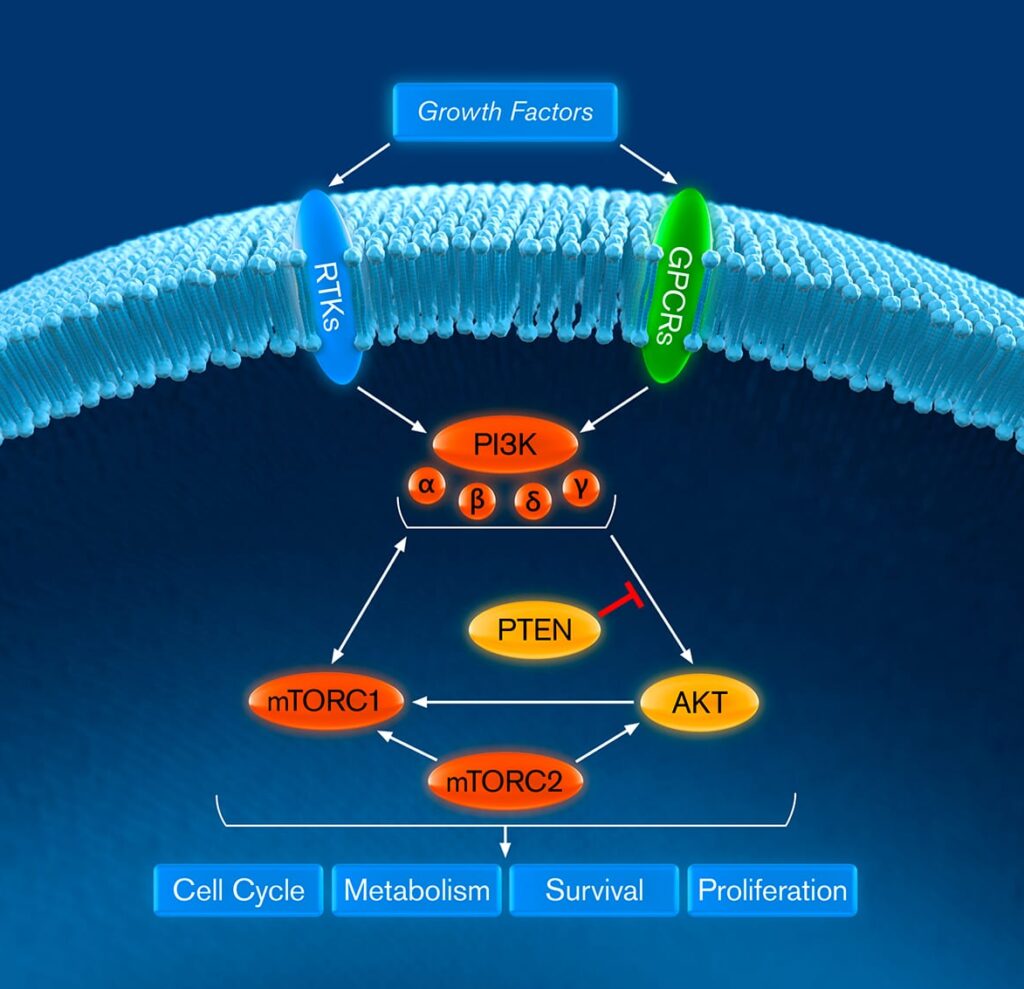Live tumor cells isolated
>100,000 live tumor cells are isolated in a proprietary cell microenvironment
Our CELsignia platform allows us to obtain proprietary insights about the relative effectiveness of targeted therapies. Our ex vivo studies found that gedatolisib inhibited higher levels of PI3K-involved signaling activity than other PI3K targeted therapeutics, regardless of PIK3CA mutational status, and demonstrated superior drug synergy when combined with other targeted therapies.
Gedatolisib’s mechanism of action and pharmacokinetic properties are highly differentiated from other currently approved and investigational therapies that target PI3K or mTOR alone. We believe this may enable gedatolisib to treat a broader patient population than inhibitors that only target PI3K or mTOR.
Gedatolisib’s initial clinical development program is focused on the treatment of patients with estrogen receptor positive (ER+), human epidermal growth factor receptor 2 -negative (HER2-), advanced or metastatic breast cancer. Unlike PI3K therapies that only target the PI3K-α isoform, gedatolisib is under development for patients with and without PIK3CA mutations.

Molecular tests can’t detect the complex oncogenic activity driving many cancers. CELsignia, our 3rd generation cellular analysis platform, unravels the complex oncogenic activity molecular tests cannot detect. This enables us to discover previously undetectable cancer drivers and new therapeutic options for cancer patients.
With the unique tumor insights CELsignia generates, we can identify new applications for targeted therapies and develop potential first-in-class drugs.
Our CELsignia platform analyzes signal transduction activity in live tumor cells ex vivo. With this platform, we measure cumulative dynamic signaling of oncogenic pathways over a four-hour period to identify tumor drivers that cannot be detected using genomic tests.

>100,000 live tumor cells are isolated in a proprietary cell microenvironment

Cell pathways are activated to generate data from >1020 cellular events at 240 time points to create a “movie” of the signaling activity

A proprietary algorithm analyzes the “big data” set to identify signaling activity levels separated by five standard deviations from normal levels
The cellular processes that drive cancer are often too complex to unravel using molecular analysis, that only provides a snapshot at one point-in-time. This is why fewer than 20% of cancer patients benefit from a drug selected with a molecular test.
CELsignia fills this void by using a patient’s live tumor cells to discover new cancer sub-types and to identify potential first-in-class targeted therapies.
We translate our discovery of a new cancer sub-type into a CELsignia diagnostic test. With our tests, we can identify patients who may benefit from a targeted therapy they are not currently eligible to receive. Our CELsignia tests are currently being evaluated in five clinical trials in patients who have an abnormal signaling pathway not detectable by a molecular test.

Our therapeutic and companion diagnostic programs

Explore the science behind CELsignia